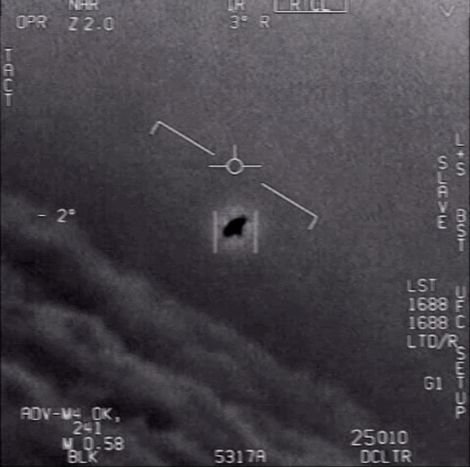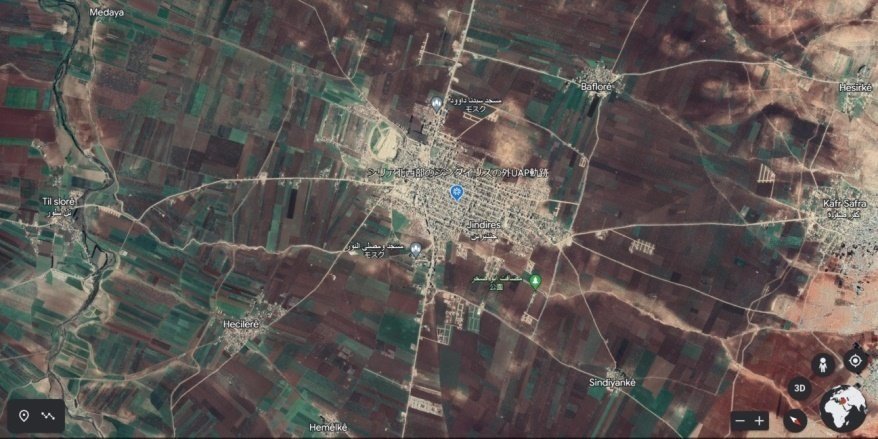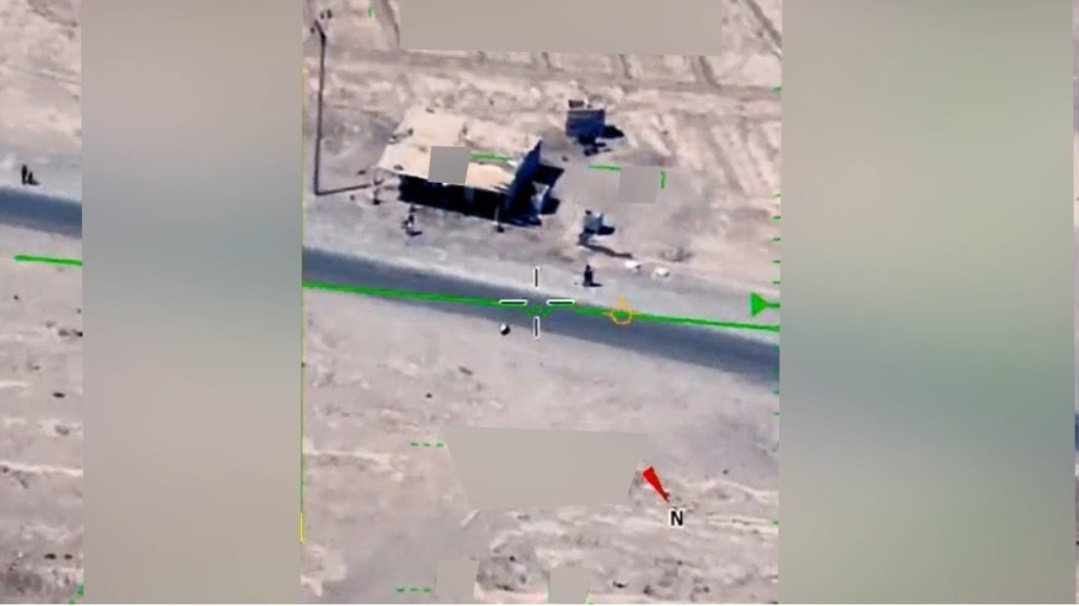
Analysis of a Spherical UAP captured in the Middle East
A mysterious sphere that AARO have declared an unsolved case!
From the limited video images, we tried to get closer to the substance of the spherical UAP, which remains a mystery,
This is its report. This Video see at

by Hiroshi Kitajima, Space Phenomena Observatory Center (SPOC)
Supervisor: Akira Kurosaki, Special Advisor, Space Phenomena Observatory Center (SPOC), Former Professor, The University of Tokyo
Click here for UFO and UAP videos taken by the Space Phenomena Observatory Center (SPOC), https://www.youtube.com/channel/UCTqD750RqvlJ1Q0uYlDxSMQ/feed

UAP video released by the U.S. Department of Defense. What is a Middle Eastern Object?
Video released by the U.S. Department of Defense's All-domain Anomaly Resolution Office (AARO) at a U.S. Senate Armed Services Committee hearing on UAP on Wednesday morning, April 19, 2023, was taken by a Remotely Piloted Aircraft (RPA) MQ-9 in the Middle East, where the object remains unidentified, according to AARO. This video, like many of the cases received by AARO, has limited relevant data sufficient to elucidate. It was decided that these cases would be kept in the AARO's active archive until additional information leading to their resolution was discovered.
This was also presented at a NASA public meeting of the Independent Study Team on Classification and Evaluation of Unidentified Anomalous Phenomena (UAP) Data on Wednesday, May 31, 2023.
Click here to see a video of the spherical UAP that is available to the public.
Unclassified Footage from mission report: 7750816 12 July 22 2156Z
Middle East UAP
https://www.armed-services.senate.gov/imo/media/video/Middle East UAP.mp4
Sphere flying while drifting left and right, reminiscent of intelligent control
Analyzing its trajectory, it is not just flying straight. It makes you think that it is accompanied by some kind of intelligent control. A flight wake with small curves was observed. It is not a spherical balloon in the wind, but is supposed to be flying independently. However, it is curious that no driving mechanism is found outside the sphere.
What we know from the video
Several areas on the left, right, top and bottom of the screen are masked. This is thought to mask the data taken and other parts of the data deemed classified by the Department of Defense. Therefore, the flight altitude, airspeed, zoom rate, etc. of the MQ-9 at that time were kept confidential.
Reference: Example of a normal video without private masking
Video called GIMBAL, not taken by MQ-9, but taken from F/A-18. Various data like this is recorded.

There were clues that led to the identification of where the photo was taken.
Information from Mr. Niwa (President of Kz.UFO Network Japan),there existed a press release dated July 12, 2022, titled Attacks Conducted in Syria, published by the U.S. Central Command. It said that UAS attacks were carried out outside Zindairis in northwestern Syria. (UAS = unmanned aerial strike)
If the photo was taken accidentally during this operation, the location could be the outskirts of Zindairis in northwestern Syria. The UAP video was taken on 12 July 22 (July 12, 2022), the same day.
This area is known as the Iraq-Syria Earthquake that occurred in February 2023 and caused significant damage.
Press Release: https://www.centcom.mil/MEDIA/PRESS-RELEASES/Press-Release-View/Article/3089938/strike-conducted-in-syria/RELEASE
PRESS RELEASE | July 12, 2022 Strike conducted in Syria,U.S. Central Command Public Affairs July 12, 2022 Release Number 20220712-01

The public video of the spherical UAP is,
The screen size is 1280x720 pixels. This resolution is HD (High Definition) with 0.9 megapixels (921,600 pixels). This is the standard used in high-definition TVs.
The published length is 742 frames; each frame is 3/100th of a second. The total duration of the video was 22.26 seconds.
The north direction is almost constant in the lower right direction. The UAP is seen to be moving in a north-northeast direction. It appears to meander, not in a straight line. Velocity is also considered to be nearly constant. Curiously, no propellers, rotor blades, wings, or other known driving mechanisms for flight were observed on the outside of the sphere. No exhaust or blowout gases were observed.
The Mystery of Flight Trails
This is the flight wake of the spherical UAP seen in each frame of this video.

Depiction of the flight path of the mysterious sphere shown in the video. Flight wake of the sphere UAP drawn from the public video (yellow line)
As you can see, it is flying on a variable trajectory from side to side. It is not due to wind.
The UAP appears as if it is changing its trajectory to avoid the building. Does the fact that it is not a steeper (e.g. right angle) curve mean that it obeys the law of inertia? This may be the world's first example of evidence that UAPs that fly according to the laws of inertia also exist.
After the curve, it was allowed to return to its original course, and the UAP is proceeding in a north-northeast direction as if guided by something. This is consistent with the current direction of the earth's north magnetic pole. This sphere UAP could have been flying along the direction of the magnetic field lines. This idea has existed for a long time but has never been proven. This time, this could be one of the world's first proofs.
Exploring the characteristics of spherical UAP
We wanted to know the altitude, speed, etc. of this spherical UAP, but the problem is that the various parameters needed to verify this are not sufficient for masking. We also examined the case where a stationary sphere is floating still in the air and the sphere is moving apparently as the MQ-9 moves, but this does not explain the phenomenon.
Therefore, the following information is used as a prerequisite
・The diameter of the sphere is set to 1 m based on the characteristics of the UAP presented by AARO.
・The person in the video is assumed to be 180 cm height.
・The size of the person's head (head length: from the front to the back of the head) shall be 20 cm.
UAP flight altitude
Image analysis method 1 for height analysis:
The first consideration in determining the altitude of this UAP was the shadow that may exist on the ground. The possibility of UAP shadows on the screen was explored. See Fig. 0.

Since the shadow of the spherical UAP could not be seen in any frame of the video, we assumed that the shadow was outside the frame. Then the altitude of the sphere UAP is more than 38 meters as a result of the calculation. There may be shadows in masked areas on the screen, but no shadows were found in any of the 742 frames in the published video. Therefore, since the shadow position is not known, the range of altitude is too wide for this method, and therefore the error would be too large.
Of course, there are several reasons why shadows are not visible as a phenomenon.
In general, a relationship exists between altitude and the phenomenon of shadow blurring or shadow fading. It is also well known that blurring is also affected by the phenomenon of "light diffraction," which is the bending of sunlight as it passes over the edge of an object. Also, if they move at a certain speed, their shadows may be difficult to capture on video or camera. It can also be difficult to follow visually. A higher frame rate and a higher resolution camera may be needed to catch the shadows of fast-moving spheres.
Therefore, we will try a different approach.
Image analysis method 2 for height analysis:

As a measured value parameter on a magnified image,
・Based on the characteristics of the UAP presented by AARO, the diameter of the sphere is 1 m ≈ 65 pixels.
・The person in the video is 180 cm height.
・Size of the person's head (head length: length from front to back) 20 cm ≈ 20 pixels
The verification is based on these three conditions.
The analysis method used here is a commonly used technique: "If an image shows two planes of different sizes and the sizes of both planes are known, and the altitude of one plane is known, the following procedure can be used to calculate the altitude of the other plane." This is the following. Aircraft size comparison: If you know the size of both planes, you can use the ratio of their sizes to calculate their altitudes. Specifically,
Knowing the actual size of an object: In the case of an airplane, this is obtained by measuring the wingspan, total length, etc. Measure the size of an object on an image: Measure the size of an object on an image in pixels. Calculate distance per pixel: Calculate the distance per pixel by dividing the actual size of an object by the number of pixels in the image. The specific formula is as follows
Distance per pixel (in meters/pixel) = Actual size of object (in meters) / Size of object on image (in pixels)
This calculates the distance per pixel, which can then be used to estimate the distance and altitude of other objects in the image. However, an accurate calculation requires an accurate measurement of the actual size of the object and the number of pixels of the object in the image. Otherwise, the error will be large.
From this,
When the size of object A with a diameter of 0.2 meters (a1) at a height above ground level of 1.8 meters (h1) was 20 pixels in the image, the size of object B with a diameter of 1.0 meters (du1) at a height above ground level of H1 meters was 65 pixels in the image. From these facts, the actual ground height H1 of object B is determined. See Fig. 1.

For a spherical UAP 1m in diameter.
1/65 pixel = 0.0154 m (per pixel)
The size of a person's head is 20 pixels at 0.2 m (a1). 0.2/20 pixels = 0.01 m (per pixel)
H1/1.8=0.0154/0.01 H1=1.8 x0.0154/0.01 H1=2.7m
A spherical UAP with a diameter of 1 m would have an altitude of 2.7 m from the ground.

In the video, there is one scene where the UAP jumps over a house. If the altitude remains at 2.7 m, there is a risk of colliding with the house, but when the altitude of this scene is recalculated, the altitude changes to 5.16 m, showing that it is jumping over the house. Despite the low height, the shadow of the spherical UAP is not captured by the camera in the aforementioned description. It is disconcerting that a silver sphere one meter in diameter is flying at such a low altitude at a considerable speed, yet no one on the ground seems to notice it. The calculations here were based on the head size and height of the person in the coarse image, which may have caused the error to be much larger.
In reality, they may be flying much higher.
Therefore, we will consider another alternative method, see Fig. 2.
Image analysis method 3 for height analysis:

Where Hm is the flight altitude of the MQ-9 at the time. Hu is the height from the ground to the UAP.
θuap is the angle of view of the UAP. Duap is the diameter of the UAP. Up is the number of pixels of UAP on the image. θav is the angle of view of the entire image. Avp is the number of pixels of the entire screen.
It is undisclosed which of the seven viewing angles of the MTS-B camera system in MQ-9 was used to capture the image. Therefore, we assume that the images were taken with a telephoto color camera with a field of view of 0.47 x 0.63.

Avp in this video is 857 pixels number. Up is the number of 8 pixels. θav is 0.79 from the viewing angle.
Hm is assumed to be 7600 m, the cruising altitude.
0.79 / 857 = θuap / 8 θuap = (0.79 x 8) / 857
θuap = 0.0074
(Hm - Hu) = Duap / tanθ
In this case, it is assumed to be 1 m based on the cruising altitude of 7600 m and the diameter of the UAP, which is the most common UAP announced by the AARO.
(Hm - Hu) = 1m / tanθ
(Hm - Hu) = 7742m
Hu = Hm - 7742m
7600m - 7742m = 142m
So, the altitude of the UAP is 142 meters.
There is another method of adding the altitude of the MQ-9 to the assumed conditions.
Image analysis method 4 for height analysis:
Another method that will be attempted is to set a hypothetical flight altitude for the MQ-9.
Mr. Kurosaki (former professor at the University of Tokyo) suggested, "It seems correct to calculate the pixel ratio as a method. The altitude of the UAP can also be calculated by adding the altitude of MQ-9 to the assumptions as another method.」This is what I calculated using that method, see Fig. 3.

Operational altitude: 7,600 meters (Hm), the height of a person can be ignored as an error. The calculation for this condition is,
1m / 7600m=0.6 5/ (7600m - Hu)
Hu =7600 - 0.65 x 7600 Hu = 2660m
Thus, the altitude (Hu) of the UAP is 2600 meters.
The above methods are re-evaluated and summarized as follows.
・Image analysis method 1 for height analysis has too wide an altitude range and too large an error because the shadow location is unknown or the shadow is not recorded.
・The image analysis method 2 for the height analysis is not correct in that no one noticed the silver sphere with a diameter of 1 m flying at a very high speed at a low altitude. The error could have been larger because of the coarse image used as a reference, the size of the head and the height of the person.
・For the image analysis method 3 for height analysis, the flight altitude of the MQ-9 and the angle of view of the MQ-9's camera are not published, so these two conditions were assumed, but the range of the angle of view is very wide depending on which angle of view is adopted.
・For the image analysis method 4 for height analysis, the flight altitude of MQ-9 is not disclosed, so it is the only assumed condition.
Therefore, Method 4 is evaluated to have the highest overall accuracy since it has the fewest number of assumptions.
Calculation of flight speed
Since flight speed can be calculated by = distance traveled / elapsed time
The ground speed of the UAP is calculated to be 151 km/h, since it moved 326 pixels in 30 frames.
To compare whether this value is correct, the speed of the motorcycle on the road in the image is calculated using the same calculation method, and it is 38 km/h. Since this seems to be an appropriate speed, it can be evaluated using this calculation method.

Find out the wind force and direction at that time
UAP video shooting date12 July 22 The wind blowing in the suburbs of Zindairis in northwestern Syria around noon was a west wind of 5.83 m/s (21 km/h). (Cooperation provided by Mr. Niwa (President of Kz.UFO Network Japan))
The UAP is flying against the wind approximately 110 degrees due to the fact that it is moving in a north-northeast direction in a strong west wind. This is impossible with a balloon.
This proves that it was not a balloon in the wind or garbage. It shows that it was flying independently against the wind.
In this case, we analyzed only the published video, and found that the mysterious metal-shaped sphere UAP was flying against the wind in the air at a very high speed. Moreover, no driving device of any kind could be seen on the outside of the sphere. No rotor blades, propellers, or drone features were observed. Nor were there any jet gases or exhaust gases, such as those emitted by rockets or jet engines. It cannot be considered just a meteorological or natural phenomenon.
Therefore, it is quite possible that it is either an unknown top-secret secret weapon created with technology obtained through years of reverse engineering based on so-called "crashed UFOs" supposedly recovered in various parts of the world, or it may have been created by someone other than earthlings. AARO announced that the shape of the most frequently sighted UAP is spherical, so it may be a spherical drone made by aliens for observation In fact, there are many spherical UAPs in the recorded movies of the SID-1® robot, an automatic observation and imaging device at the Space Phenomena Observatory Center (SPOC).
Reference:
MQ-9 Remotely Piloted Aircraft (RPA)
Maximum altitude: 15,200 m (50,000 ft)
Operational altitude: 7,600 m (25,000 ft)
Maximum speed: 482 km/h (300 mph, 260 knots)
(Ref.:General Atomics Aeronautical)
The General Atomics MQ-9 reconnaissance drone is equipped with several high-performance sensors and cameras, including the MTS-B camera system,
RS-170A NTSC video signal and digital output
・
There are seven viewing angles within a range of 34x45 (maximum wide angle) and 0.08x0.11 (maximum telephoto). The mode in which the video was taken was not disclosed. (Ref.: Raytheon MTS-B Data Sheet_032805)
